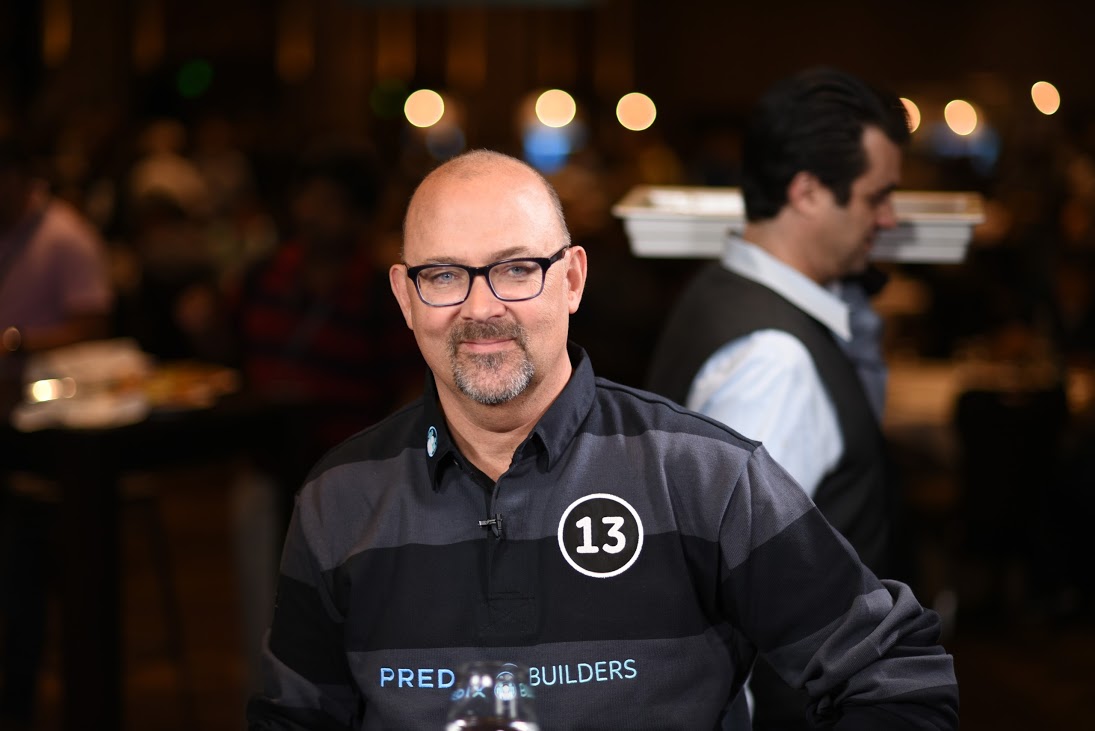 NEWS
NEWS
 NEWS
NEWS
 NEWS
NEWS
General Electric Corp. is expanding on its Internet of Things (IoT) initiative with GE Predix, a platform enabling developers to create apps that connect to industrial assets and deliver real-time information.
Greg Petroff, chief experience officer at GE Software and executive director of platform evangelism for GE Predix, joined Jeff Frick (@JeffFrick), cohost of theCUBE, from the SiliconANGLE Media team, during the GE Predix Transform week in Las Vegas to provide insight into the culture and innovation in IoT that are happening now and what is ahead in the future.
This week theCUBE features Greg Petroff as its Guest of the Week!
Beginning the interview by noting the company’s growth, Frick asked how GE Predix was attracting talent in such a competitive market. According to Petroff, making a change in the world is what matters to people.
“I think part of our appeal [GE Predix] is that people are working on things that really matter. If you can make an airplane use its fuel more efficiently, that’s a huge outcome for economies and business, but also it takes carbon out of the atmosphere. These are things that people actually feel good about when they go home from work and say, ‘What did you do today?’; ‘Well, I actually changed something that’s going to change the world.’ So that’s been a big part of our appeal to developers.
“You can go work in a lot of different places in the Valley, but this place is really purpose-driven toward infrastructure and making it work well. The problem space is just really fascinating. It’s totally different than enterprise software. There’s a lot of different problems, and it really benefits from all of the new cloud tech stacks in ways that are really unimaginable.
“We’re excited to have the community here. We’re trying to build a tribe that is really interested industrial solutions and industrial outcomes. It’s a challenge. Building a new community is always difficult. One of the key decisions that GE made early was to make Predix an open platform. So it’s not just GE that’s building capability in the platform. We’ve got partners like Tech Mahindra, [with an] emphasis on building capability. We have customers who are buying and making solutions but also adding capability, like Pitney Bowes … [it developed] a location data service that they’ve created and added to the platform. So it’s really exciting. We have people making stuff and adding capability.”
Frick asked Petroff to discuss his involvement in the IoT Consortium. He related that back in the day with the rise of open source that seemed to be the mechanism for setting standards versus the classic consortium. Petroff talked about the IoT Consortium and other industry consortiums that are facilitating conversations about connectivity and computing at the edge.
“We’re early, so there’s groups emerging. The Industrial Internet Consortium, which GE is one of the founding members of, is not really a standards body. It’s really a group that is trying to facilitate a conversation with technology companies about this marketplace. Get people literate about the opportunities. Help people understand through test beds that the technology is mature and capable of solving real problems. … GE’s perspective is focused on interoperability [that] benefits everybody.
“Our customers are asking for a single pane of glass to view their environments. We may have what we think is the most important real estate, the gas turbine or the jet engine, or the locomotive, but there are other pieces of equipment from other vendors at our customer sites, and they are frustrated because they can’t see across those systems. So we know we have to play well with others. We have to have people who are building complementary technologies, have a big tent, and it is really important for us to be in these organizations to express our point of view and to get others to join.”
As the IOT evolution continues, Frick inquired about the future for GE. He wondered if it is IoT specifically with industrial Internet as a subset. Petroff offered three areas of focus for GE.
“Part of it is getting to critical mass and scale so customers feel confident that they can grow quickly. That’s part of an event like this where we’re building a developer community inside. We have 1,700 here today; we hope to have 20,000 developers by the end of this year. We’re over 10,000 trained in Predix. … I think we are really doubling down on machine learning.
“We know there are three buckets to understanding the industrial world. There’s the typical data science things that you might get from the business intelligence world, and we’ve got to be great at that. There’s a sort of social knowledge of operational technology that you can embed in algorithms … and the last part is machines have physics models. We know the material science of the machines. Can we build machine learning algorithms that understand how machines operate over time? … If we get that right, we can maintain each machine individually. … We’re going to get more resilient infrastructure, and businesses are going to be able to take advantage of economic opportunities and … be capable of servicing their customers in ways we don’t even know.”
Watch the full interview below, and be sure to check out more of SiliconANGLE and theCUBE’s coverage of GE Predix Transform 2016.
THANK YOU